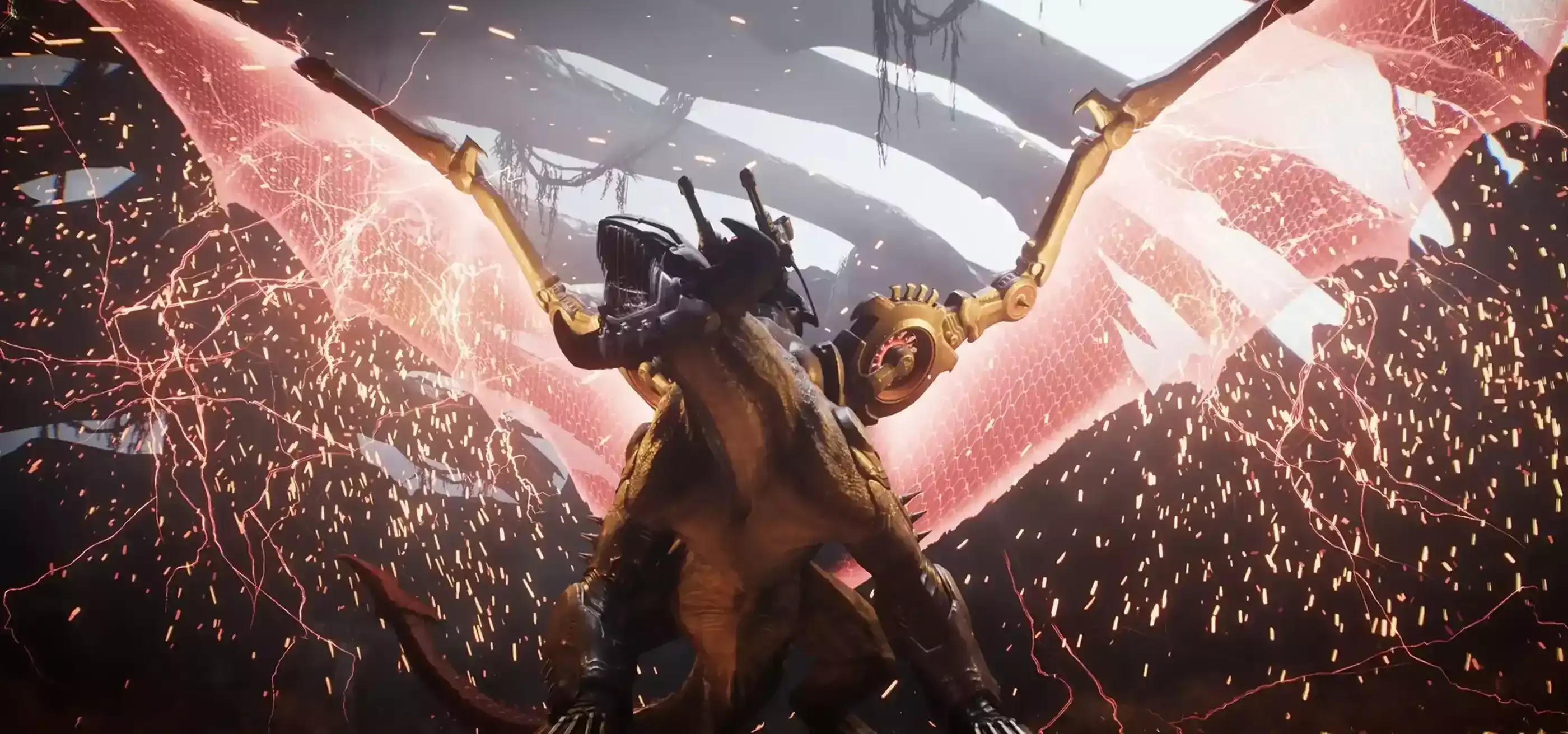As a huge fan of DOOM (2016) and DOOM Eternal, Todd Alberda was incredibly excited to land a job as an id Software 3D environment artist in 2021. “Finishing up my time as a contractor on Halo Infinite, id was next in line as far as dream studios go,” the 2019 DigiPen BFA in Digital Art and Animation graduate says.
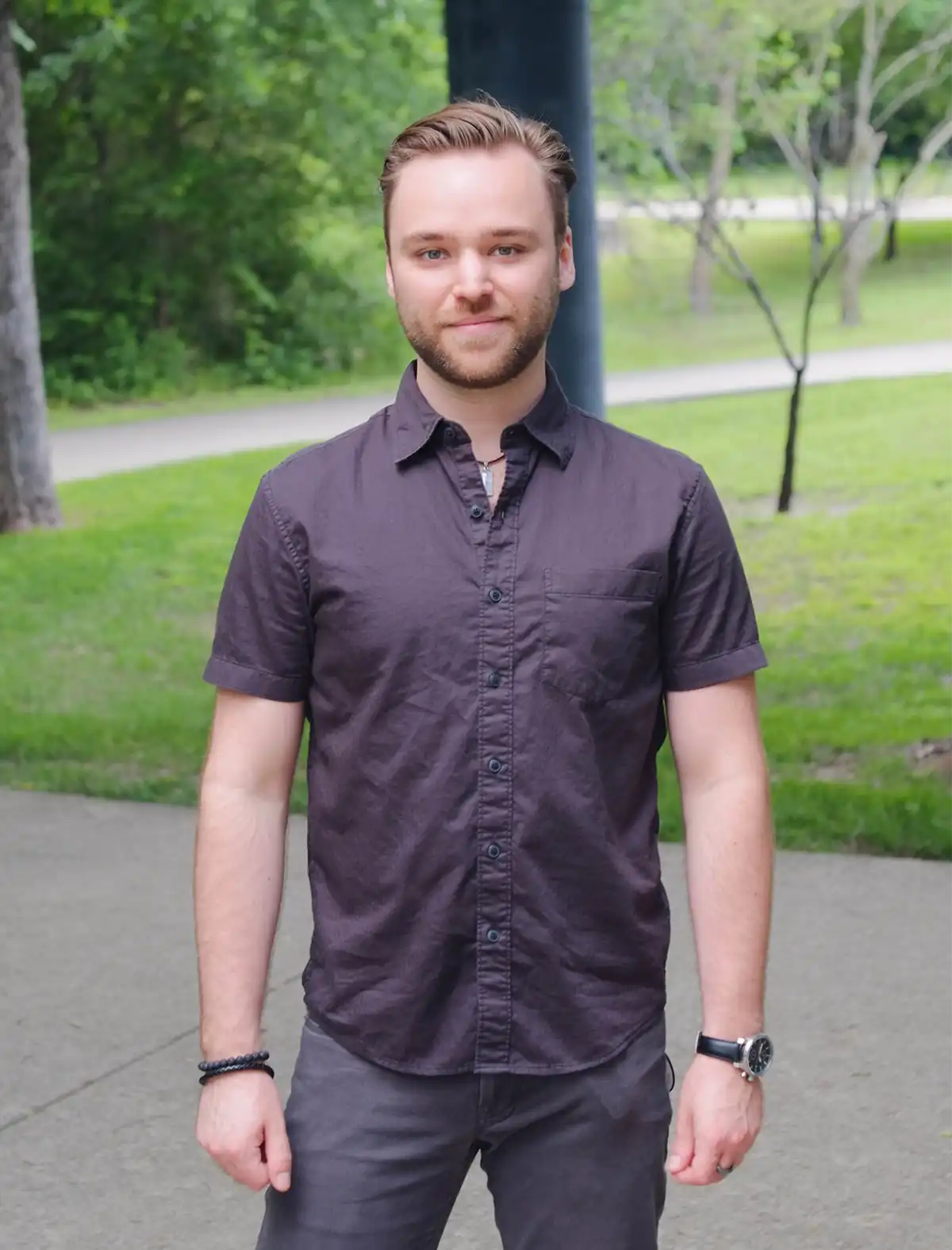
Specializing in “hard surface” art — the 3D subdiscipline covering rigid, man-made objects like weapons, machinery, and metal structures — Alberda walked into id’s Dallas, Texas, offices his first day expecting to produce the same kinds of industrial sci-fi interiors the Doom Slayer had been blasting demons in for three decades of franchise history. Instead, he found himself studying imagery from The Lord of the Rings and taking notes on how grime accumulates on real-world castles from antiquity. “It’s definitely not what I expected!” Alberda laughs. “The hard surface sci-fi stuff is still there, but we leaned way more into the medieval side of things.”
That creative shift became the foundation for DOOM: The Dark Ages, a bold reimagining of the genre-defining first-person shooter franchise that drops the Doom Slayer into a grim, techno-medieval world. Armed with a flail, a blade-rimmed shield, and even a dragon mount, the Slayer now rips through hellspawn in a crumbling Gothic fantasy setting. “It was outside of my comfort zone at first, but I really like being in that space. When id landed on my plate, I knew I was going to be challenged here and get to work on something I’m super excited about, and it has totally lived up to the hype,” Alberda says. Players seem to agree, heaping unanimous critical praise on the game for the fresh and unexpected setting shift that Alberda and his team helped bring to life.
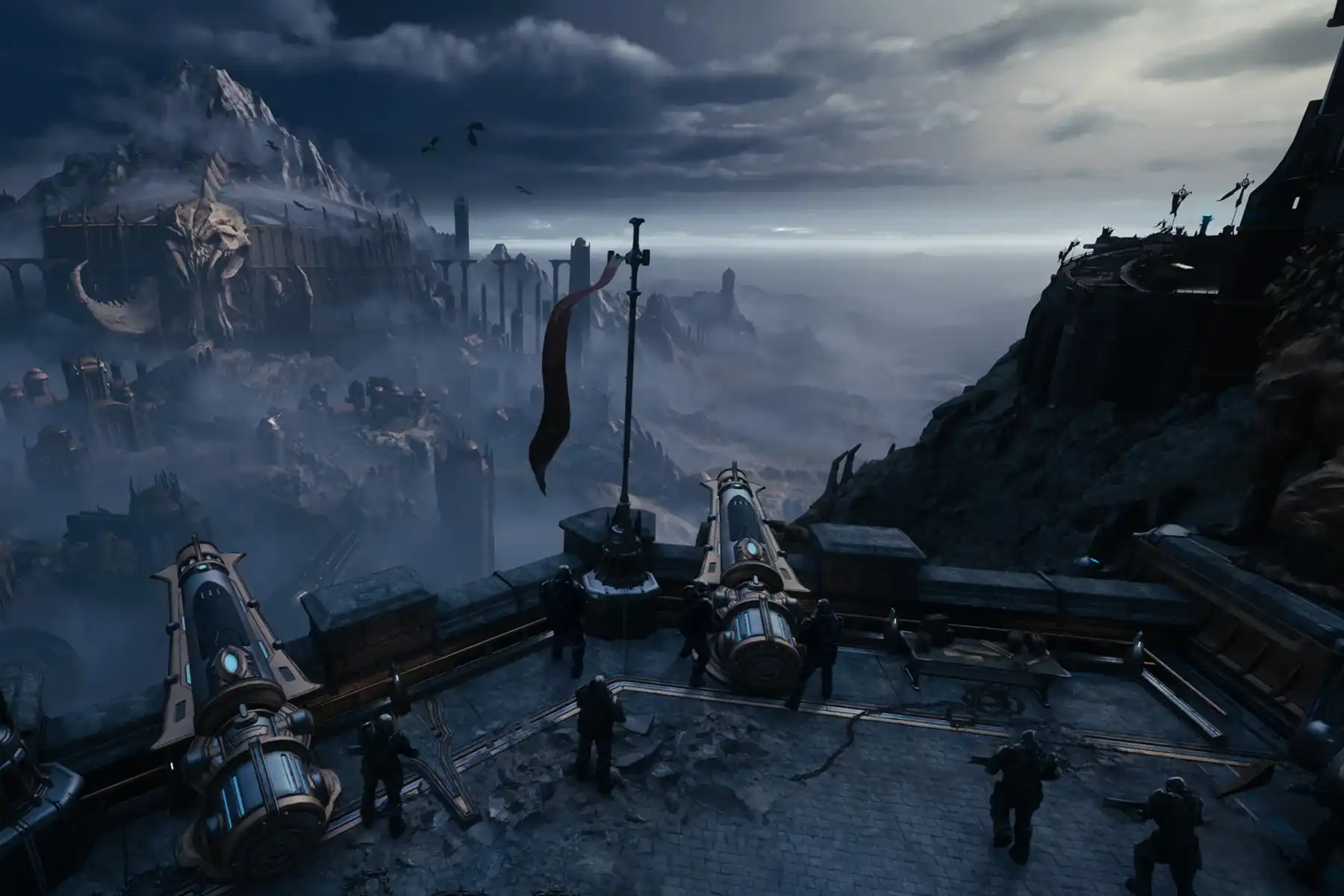
Alberda initially discovered his passion for hard surface art during his sophomore year at DigiPen, when he first started exploring 3D modeling software. “It really clicked,” he says. “There’s just something about hard surface and the scientific nature of it that is intuitive to me.” Senior year, he honed his hard surface skills on two fronts, creating the main goo-blasting gun and back-mounted ammo canister for his game team’s polished horror project, The Luminist, while simultaneously modeling skyscrapers for Iron Man VR during an internship with Bellevue, Washington, studio Camouflaj. Shortly before graduating, his talents landed him another internship at 343 Industries (now known as Halo Studios), where he set to work on Halo Infinite for nearly two years.
“The goal of the internship was to build you up to become a full-fledged employee, so they gave us a lot of responsibility right out of the gate,” Alberda says. “It was a huge kick in the pants, but my career has really benefitted from it, and I don’t think I’d be where I am today without that.” Eventually progressing from intern to contractor, Alberda became responsible for entire game spaces, many of which were sleek, shiny interiors constructed by the Halo series’ technologically advanced Forerunner species. “I was working on entirely hard surface spaces — not a bit of dirt, no rocks, nothing organic,” Alberda says. “At id, those foundations of hard surface have definitely been useful, but I’ve done a lot more stepping outside of that here.”
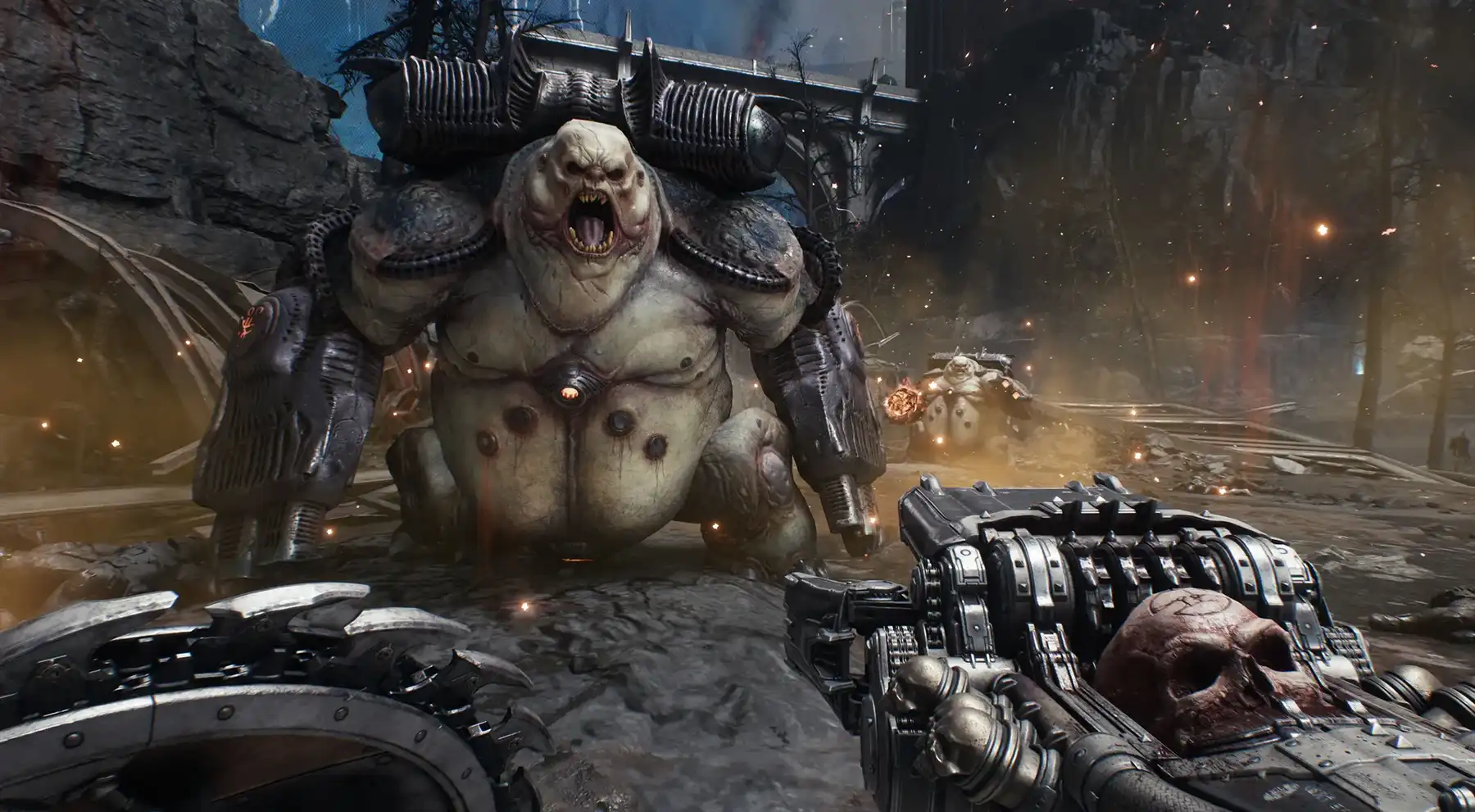
After a brief early orientation period learning id’s environment art parameters, the studio quickly encouraged Alberda to explore organic spaces and increasingly expansive sections of levels. “My number one skill I’ve built here is my worldbuilding, being responsible for an entire environment space, not just a room,” Alberda says. “These are entire sections of levels where there are architectural ruins everywhere, and I’m responsible for placing plants, for the ground, for so many things that aren’t just hard surfaces.”
The environment creation process begins with level designers, who block out each space using simple grey boxes. Concept artists then take an angle from the block out and paint over it to figure out the look and theme for the area. After both are approved, it’s up to Alberda to translate that into 3D. “It’s never totally one-to-one taking concept into 3D,” Alberda says. “There’s a lot of room for going, ‘Maybe this is a totally destroyed space with minimal architecture, or maybe we’ll take this foliage we lightly used elsewhere and really amp it up everywhere in this new level to give it a distinct identity.’”
That creative flexibility led to some of Alberda’s most exciting opportunities for artistic growth on The Dark Ages. “Sometimes you would have to do a space from scratch and figure out what it looks like in your head without a concept because the artists just don’t have time to concept everything,” Alberda says. One such space, the cylindrical, bowl-shaped “Maykr Room” that appears in many of the game’s trailers, was up to Alberda to craft largely from imagination. “I just had to make something happen!” Alberda says. “Some of that meant using DOOM Eternal assets and spinning them off into their Dark Ages sibling assets. There was a lot of original stuff that had to happen there that was certainly challenging.”
Another standout moment came when Alberda was tasked with designing the River Styx Hell Barge, a massive ship near the end of the game’s “Harbor of Souls” chapter, with similarly minimal concept art to start from — affording him substantial creative ownership. “I had a huge say in what that looked like, both in terms of the exterior of the ship, how that is broken down into usable pieces, and then also just what playing on the ship looks and feels like,” he says. “It was such a unique space compared to the rest of that map, and there was a lot of creativity required on my end. That’s the area I’m most stoked about — it should be awesome and I’m excited for players to experience it!”
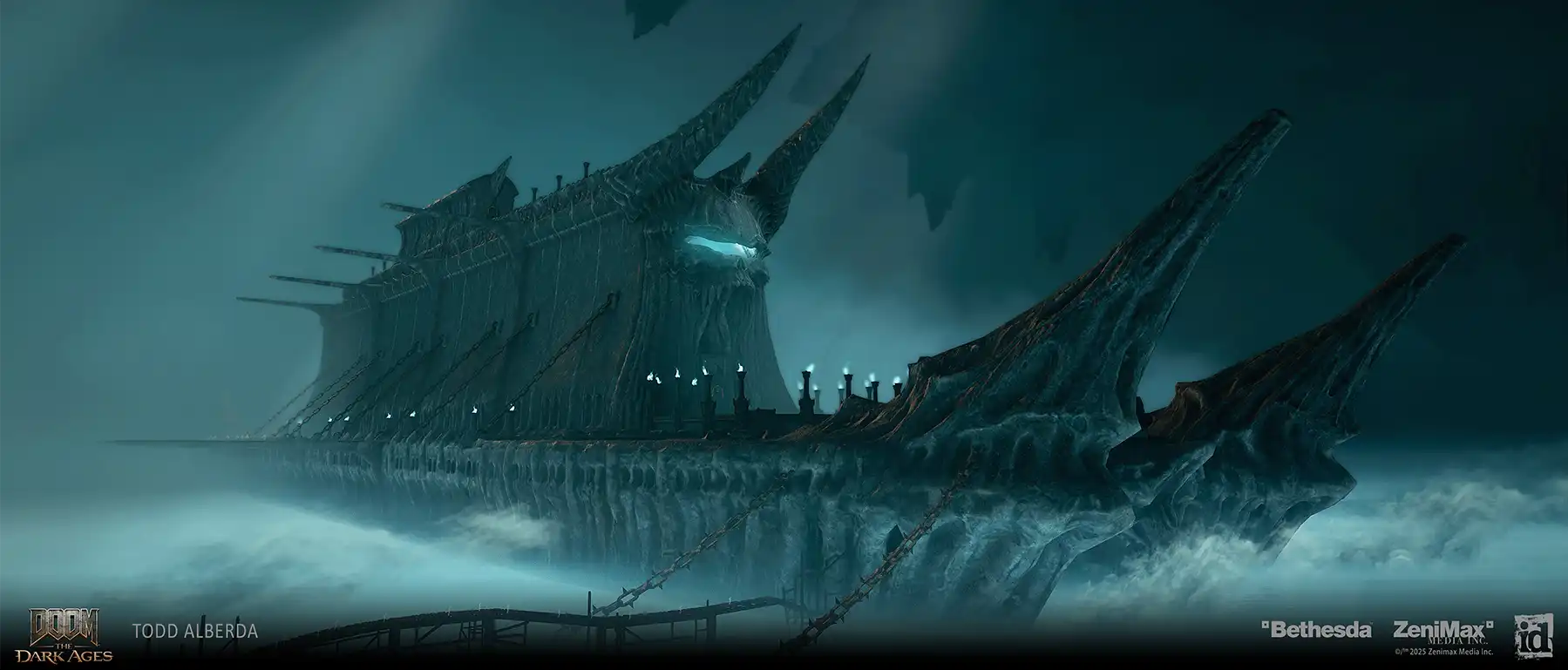
Among the dozen or so spaces and levels Alberda crafted from the ground up for DOOM: The Dark Ages, another exciting new opportunity was building the sets for in-game cinematics. Unlike player-controlled environments, cinematic sets are created for a single, fixed camera angle. “It’s a lot, but it’s really fun,” Alberda says. “You get to really finesse that one shot at that one angle in a way you don’t in a normal level.”
Just like the Doom Slayer rising to meet impossible odds, Alberda credits DigiPen for preparing him to surmount every new challenge. “As id kept giving me more and bigger spaces, I really had to step up to the plate. My professors and DigiPen as a whole helped me learn not to shy away from challenge and that it’s up to you to carve your own path and create a unique voice in the industry.” It’s an attitude that recently earned Alberda a post-release promotion at the studio to senior environment artist. “No one can make it happen other than you!”
